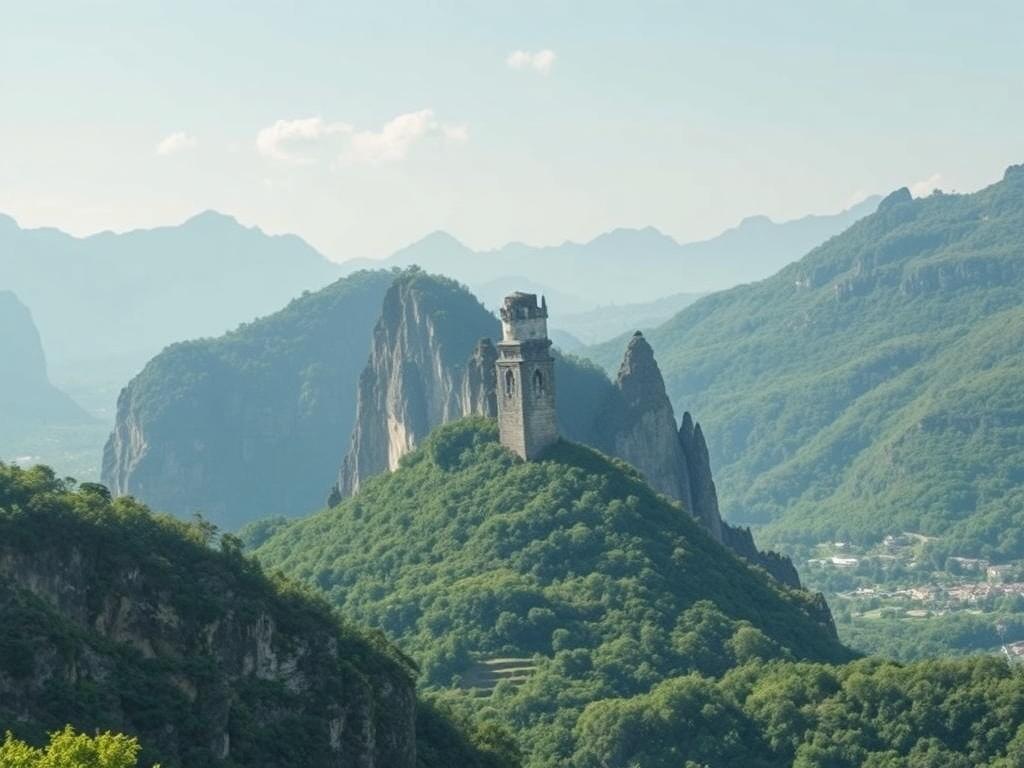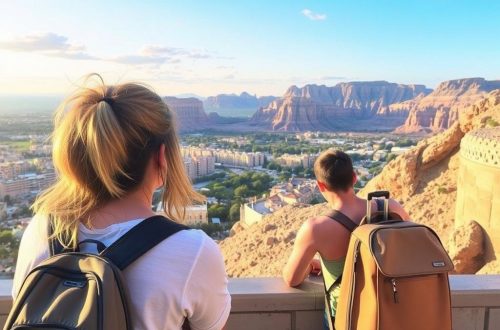
Best Destinations for Cultural Immersion: Explore the World Beyond Tourist Trails
SQLITE NOT INSTALLED
Traveling isn’t just about ticking boxes and visiting iconic landmarks; it’s about immersing yourself in the culture, traditions, and everyday life of a place. If you want to go beyond the typical tourist experience and truly connect with a destination, seeking out places perfect for cultural immersion is key. Whether you are wandering through ancient villages, attending local festivals, or learning traditional crafts from the people who keep them alive, cultural immersion lets you experience the world in a profoundly meaningful way. In this article, we’ll explore some of the best destinations for cultural immersion, where you can dive deep into local customs, savor authentic cuisine, and create memories that last a lifetime.
Why Choose Destinations for Cultural Immersion?
Cultural immersion travels bring a different kind of fulfillment. They foster empathy, broaden your perspective, and help you appreciate diversity. Unlike standard sightseeing tours, these experiences allow you to live alongside locals, share their stories, and participate in their daily routines. Imagine waking up in a remote village, learning to cook traditional recipes, or joining a community ceremony — these moments make travel more than just a getaway; they turn it into personal growth.
Besides enhancing your travel pleasure, cultural immersion supports local economies in sustainable ways. By spending money directly with artisans, homestays, and small businesses, you contribute to preserving heritage and empowering communities. So, choosing the best destinations for cultural immersion not only enriches you but also respects and uplifts the cultures you visit.
Top Destinations for Cultural Immersion Around the Globe
Travelers seeking rich cultural experiences will find exceptional destinations across continents. Here’s an insightful guide to some of the best places where you can unplug from mainstream tourism and immerse yourself in local life.
1. Kyoto, Japan – A Harmony of Tradition and Modernity
Kyoto stands as a jewel of Japanese culture, blending centuries-old traditions with a vibrant modern spirit. Known for its stunning temples, tea ceremonies, and exquisite gardens, Kyoto offers travelers authentic experiences at every turn. In the Gion district, visitors can spot geishas preparing for their evening performances, while workshops teach everything from ikebana (flower arranging) to calligraphy.
Living in a traditional machiya townhouse or participating in a local festival such as Gion Matsuri gives cultural immersion here a personal touch. The city’s culinary scene—from kaiseki meals to street foods like yatsuhashi—further deepens understanding of Japanese culture.
2. Oaxaca, Mexico – A Feast of Indigenous Traditions
Oaxaca pulses with vibrant colors, flavors, and customs inherited from its indigenous peoples. This Mexican city features cobbled streets lined with colonial architecture and bustling markets brimming with handcrafts like black pottery and woven textiles. The annual Day of the Dead celebrations here are among the most authentic and moving cultural events in the world.
Visitors can take part in mezcal tastings, cooking classes for traditional dishes like mole, and workshops led by local artisans. Oaxaca’s welcoming communities provide ample opportunities for cultural exchange, making it one of the best destinations for cultural immersion in Latin America.
3. Varanasi, India – Spiritual Heartbeat of the Ganges
Varanasi, one of the world’s oldest living cities, offers a uniquely spiritual cultural experience. Life here revolves around the Ganges River, where daily rituals, cremations, and prayers unfold against a backdrop of deeply rooted beliefs. Witnessing the morning aarti (prayer ceremony) on the ghats provides an unforgettable sensory immersion.
Stepping into the narrow alleys, travelers encounter craftsmen, musicians, and street food vendors preserving ancient arts and traditions. Volunteer programs and yoga retreats are also available, allowing visitors to participate actively in this vibrant tapestry of culture.
4. Chefchaouen, Morocco – The Blue Pearl of North Africa
The tranquil town of Chefchaouen, with its dazzling blue walls, invites travelers seeking authentic Moroccan culture away from big city crowds. Here, you can explore artisanal markets specializing in woven rugs, leather goods, and ceramics, many crafted by local Berber communities.
Participating in a cooking class to learn tagine or couscous recipes, or staying in family-run riads, lets you dive into Moroccan daily life. The surrounding Rif Mountains also provide opportunities to engage with rural Berber villages and traditions, rounding a true cultural immersion experience.
5. Luang Prabang, Laos – A Blend of Buddhism and Colonial Charm
Luang Prabang offers peaceful vibes and a rich cultural landscape characterized by Buddhist temples, French colonial architecture, and a strong sense of community. The daily alms-giving ceremony, where monks collect food at dawn, is a moving ritual that visitors can respectfully observe or join.
The night market showcases traditional handicrafts from surrounding ethnic groups, while cooking schools impart Lao culinary secrets. Beyond the town, day trips to villages encourage cultural exchange with ethnic minorities, making this a top choice for travelers seeking slow, immersive experiences in Southeast Asia.
How to Make the Most of a Cultural Immersion Trip
Now that you know some of the best destinations for cultural immersion, let’s talk about how to dive into the experience authentically and respectfully. These tips will help you connect genuinely with the people and places you visit.
Embrace Local Customs and Language
Learning a few phrases in the local language shows respect and opens doors. Simple greetings or asking questions can lead to warm interactions. Equally important is understanding cultural norms—how to dress, behavior in sacred places, and dining etiquette.
Stay with Locals Whenever Possible
Homestays, guesthouses, or small inns run by locals provide opportunities to see the world through their eyes. You often share meals, conversations, and daily routines, which enriches your understanding far beyond what hotels can offer.
Participate in Community Activities
Whether it is helping with traditional crafts, joining festivals, or volunteering, active participation creates meaningful connections. Many communities welcome visitors eager to learn and engage sincerely.
Support Local Artisans and Businesses
Purchasing hand-made crafts, eating at local eateries, and hiring local guides ensures your money benefits the community. Avoid souvenir shops that sell mass-produced items disconnected from the local culture.
Comparing Cultural Immersion Destinations: A Quick Guide
To help you choose your next culturally immersive adventure, here’s a quick comparison of some top destinations based on key aspects:
| Destination | Cultural Highlights | Best Time to Visit | Unique Experiences | Level of Accessibility |
|---|---|---|---|---|
| Kyoto, Japan | Temples, tea ceremonies, festivals | Spring (cherry blossoms), Autumn | Geisha district, ikebana workshops | High (well-connected, tourist-friendly) |
| Oaxaca, Mexico | Indigenous crafts, Day of the Dead | October-November (Day of the Dead) | Mezcal tasting, traditional cooking classes | Moderate (some rural areas) |
| Varanasi, India | Religious ceremonies, ancient rituals | October-March (cool season) | Ganges aarti, yoga retreats | Moderate (busy but manageable) |
| Chefchaouen, Morocco | Berber crafts, mountain culture | Spring, Autumn | Cooking classes, mountain village visits | Moderate (remote but accessible) |
| Luang Prabang, Laos | Buddhist rituals, colonial architecture | November-February (dry season) | Alms giving, ethnic village tours | Moderate (small town, tourist infrastructure) |
Essential Tips for Responsible Cultural Immersion Travel
Cultural immersion is as much about the traveler’s approach as the destination itself. To ensure your experience is positive and ethical, consider these guidelines:
- Respect privacy: Always ask before photographing people or private events.
- Avoid imposing: Let local people guide interactions and don’t force participation.
- Learn local etiquette: Some customs might seem unusual but are important to locals.
- Contribute positively: Engage in activities that benefit the community and support preservation efforts.
- Be patient and open-minded: Cultural immersion often means stepping out of your comfort zone.
Planning Your Cultural Immersion Journey
Before you embark on a trip focused on cultural immersion, thoughtful preparation will make a big difference. Research destinations deeply, read firsthand traveler experiences, and reach out to local agencies or community groups. Packing light and respectfully, including modest clothing for sacred places, will help you adapt more easily.
Booking accommodations with cultural ties, scheduling time to meet locals, and planning your itinerary to avoid rushed sightseeing will maximize your experience. Be ready to slow down, observe, and listen—these are the hallmarks of meaningful cultural exploration.
Conclusion
Choosing the best destinations for cultural immersion opens a gateway to unforgettable travel experiences. It’s about more than seeing landmarks; it’s about living the stories, tasting the traditions, and building connections that span continents and generations. From the serene temples of Kyoto to the vibrant markets of Oaxaca and the sacred ghats of Varanasi, each place offers unique opportunities to engage authentically and thoughtfully with local culture. By approaching these journeys with curiosity, respect, and an open heart, you become a participant in a global dialogue that enriches both your life and the communities you visit. So pack your bags, prepare to listen and learn, and get ready to discover the world’s soul through cultural immersion.




